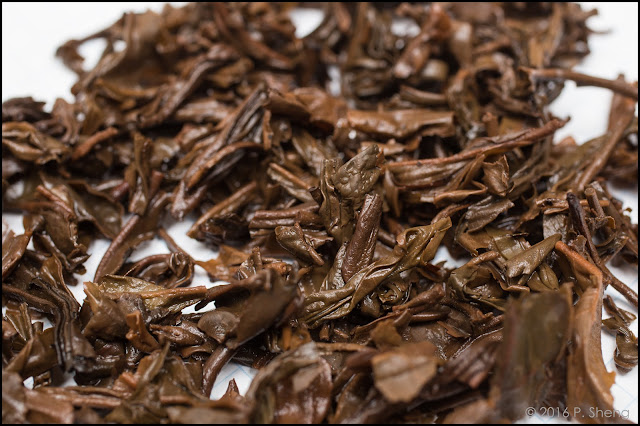This post is about 88 Qing Bing, thin wrapper version.
§ A BIT ABOUT 88 QING BING
The 88 Qing Bing ("88QB") tea in
this post was obtained from a trusted tea collector extraordinaire in
Malaysia. It has been stored naturally by the collector since the early
1990’s.
There are 2 important key elements to 88QB:
- They are Menghai Factory-produced 7542 tea cakes from 1989-1992, and
- They are dry-and-naturally stored † (see endnotes for more information)
Once authenticity can be confirmed (point # 1), the next challenging
and interesting part will be to determine the tea’s storage (point # 2).
Due to storage differences by various owners, 88QB comes in many
different expressions. Some of these expressions are exceptional, while
others are lesser in quality.† According to Mr. Chan Kam Pong, author
of “First Step to Chinese Puerh Tea”, a significant amount of Best Tea
House’s 88QB stock had been sold to buyers worldwide as of 2003.† As
such, the change in provenance will have subjected much of the worldwide
supply to storage differences, and therein lies the rub.
§ TASTING NOTE
For the sake of brevity, I will defer all visual observation and
description to the accompanying photographs.
Basic parameter: ~5.5
grams in a 110ml Yixing pot; Volvic spring water at 100°C/212°F.
A true powerhouse in taste and energy! The scent of the tea cake
radiates far and robust with attractive medicinal/herbal scents,
preserved dates or plums and a sort of oriental spices that is mildly
sharp. It’s quite a wonderfully intoxicating perfume. There was no
hint of smoke or wet-storage smell. The tea soup feels thick and oily,
yet it still possesses a finely-textured astringency that forms a
necessary backbone for further aging. Of its taste, the phrase “iron
fist in a velvet glove” fits the bill accurately. It packs power and
punch! The concentration of flavors and aromas is very
dense…herbal/medicinal, spicy, plummy, extremely cooling, numbing of the
mouth cavity, all in an explosion of activities before it goes down
smooth. It’s never bitter in the slightest. The aftertaste is sweet
and long with impressive staying duration. The energy (
chaqi) feels
clean and powerful.
After 8 steepings, there is an unmistakable
feeling of euphoria. It’s unlike that of being tea drunk. The tea
continues to steep well for about 15 steepings before I transferred the
leaves into a large pot with a tea warmer underneath for an extended
extraction. 2 days and 25 generously-sized cups later, it still refuses
to give up.
§ CONCLUSION
In 2007, I had the opportunity
to taste the 88QB, albeit one with a very different expression. I was
not impressed by the tea to say the least. It was unpleasantly smoky,
very woody and the aftertaste was metallic and somewhat akin to
cigarette smoke. According to my old notes the tea was thin-bodied.
That tasting session many years ago made me feel unwell and
disappointed. Ever since that tasting, I hardly ever thought of 88QB
with much regard. I assumed (wrongly) that it was just another
overrated and overpriced tea.
In more than 20 short years of tea
learning, I can only count a handful of times -- spaced over many years
apart -- when I encountered a tea so singularly exceptional. These are
the kind of teas that shook one’s understanding of what great tea is all
about and why we make such a great fuss about them. This particular
88QB is one of them. The learning never stops.
===================
†
ENDNOTES:
1. Because dry and natural storage is a key aspect to 88QB, any example
that exhibits wet storage exposure would deviate from the intended
expression that is responsible for 88QB’s high acclaim.
2. An
88QB that has been humidly-stored (i.e. traditionally or wet) for most
of its existence may not exhibit the same power and punch that a
dry-stored specimen would.
3. Dry-storage does not mean bone-dry
conditions, but rather an environment where moderate to high levels of
humidity and temperature are natural without any artificial means.
4. Best Tea House in Hong Kong is the original proprietor of many
well-known dry-storage pu’er teas. 88QB is considered to be the epitome
of such storage practice.
5. Kam Pong, Chan, First Step to Chinese Puerh Tea, Taipei: Wushing Books Publication Co. Ltd., 2006. Print.
6. The photos of the wet leaves are less than ideal. Much of the leaves
for this first session were from those that have fallen off of the cake
and trapped inside the wrapper. For all intent and purposes, however,
they clearly show all the necessary visualization for aged and
dry-stored tea leaves. I will provide better photos of wet leaves next
time.
7. External links and references on 88QB:
===================
§ IMAGES
With the intent of providing a useful reference for everyone
and myself, the photographs that accompany this post have been captured
by using strict product photography
standards to ensure accurate color representation.
































